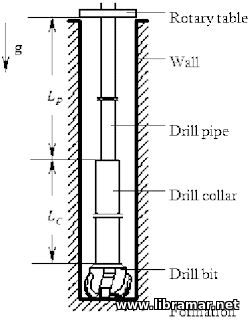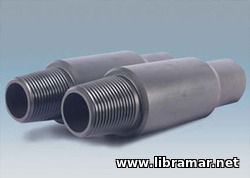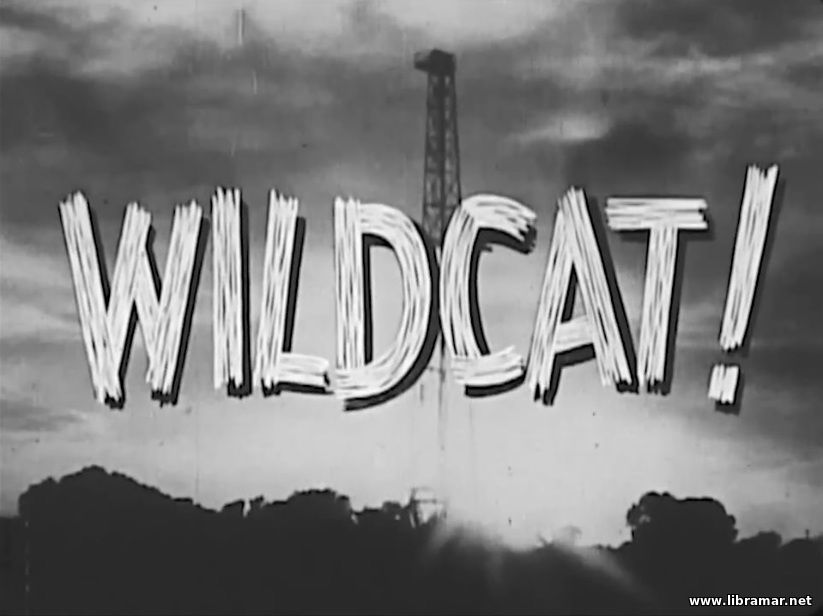Drill String and Tool Joints

Unlike drill collars, the drill string is not ordinarily used to put weight on the bit. The drill string is made of steel or aluminum and is normally used for two basic purposes: to serve as a conduit, or conductor, for the drilling fluid; and to transmit the rotation of the rotary table or top drive to the bit on the bottom. Since it is not exclusively used to put weight on the bit, the drill string is smaller and lighter than the drill collars. In addition, in straight-hole drilling, it is suspended in the hole under tension, not compression. It is kept in tension by two opposing forces – the weight of the collars pulling it from the below and the hoist, line, and blocks pulling on it from the surface. Keeping the drill string in tension prevents it from bending and buckling and prolongs its life.
Manufacturers design the drill string so that it can withstand some of the most common stresses encountered during drilling. Relative to a drill collar, the drill string is small and thin, yet it can withstand powerful forces. Basically, the drill string is a column, or string, or drill pipe with attached tool joints. Most drill pipe is steel that is forged into a solid bar and then pierced to produce a seamless tube. Because the wall of the tube is relatively thin, usually less than half-inch thick, the manufacturer cannot cut threads into it. To solve the problem of providing threaded ends, so that the pipes can be screwed together, manufacturers produce tool joints.
The tool joint is a separate piece of metal welded onto a seamless drill pipe to produce the characteristic bulge at each end. The wall of the tool joint is thick enough to have the pin or the box cut into it. To prepare the drill pipe for welding, the manufacturer first heats the ends of the pipe and then strikes the heated end forcefully. These heavy end-on blows thicken the hot steel in the pipe ends. Manufacturers call the thickened ends “upsets”. The pipe maker thickens the last 3 to 6 inches of each end of the pipe to make it stronger.
make it stronger.
Manufacturers produce drill pipe with different types of offsets. Some have an internal upset: that is, the bore of the drill pipe is reduced. Viewing the pipe from outside reveals no thickened areas. Smaller pipes have an external upset. These pipes have increased outer diameters. The internal diameter, or bore, of the pipe is not reduced. Most drill pipe comes with both internal and external upsets.
Once the ends of the drill pipe are upset, the manufacturer welds the cylindrical tool joints to the upset ends by spinning the tool joint at a high rate of speed ton a flywheel while the joint is touching the upset end of the pipe. Placing the upset end of the pipe against the spinning tool joint creates enough heat to weld the two together. This type of welding is referred to as friction welding, or inertia welding.
The wall of the tool joint is about 2 inches thick and about a foot long. Each tool joint pin and box includes the tong area and the elevator shoulder. The tong area refers to that area of the point to which drilling crews attach the tongs that make up or break out the tool joints. Pipe manufacturers machine and shape the tool joint and cut threads into it to make one end of the pipe a pin and the other end a box.
Manufacturers produce some tool joints with hardfacing on the joint’s exterior. When correctly applied, hardfacing may greatly increase the life of a tool joint. Tool joints tend to wear more rapidly when rotating through a dogleg or a curved portion of the hole. An abrasive formation can reduce the size of the tool joint and weaken it. The hardfacing on the tool joint can withstand abrasive wear much better than ordinary steel surfaces can and thus can prolong the life of the tool joint.
Manufacturers also produce tool joints with tapered elevator shoulders so that the pipe can more easily slide past doglegs and curves in the wellbore. Normally, the shoulder of the box has an 18 degree taper. Years ago API recommended that the pin shoulder should also be tapered to 18 degrees. Producing this gradual taper on the pin, however, increased the pin length. Adding to the length of the pin or the box increases the cost of the joints. For years, the industry agreed that only the box needed the 18 degree taper. Thus, API recommended a compromise taper of 35 degrees for pin shoulders. With more horizontal drilling taking place and extended-reach wells getting longer and longer, however, the need for a 18 degree pin shoulder has become more apparent. Pin shoulders with this degree of taper reduce the drag on drill pipe during trips out of the hole. API has now agreed to make 18 degree pin shoulders an acceptable option.
The "Read Later" function allows you to add material to this block with just one click. Just click on the icon and read the articles that interest you at any convenient time.


